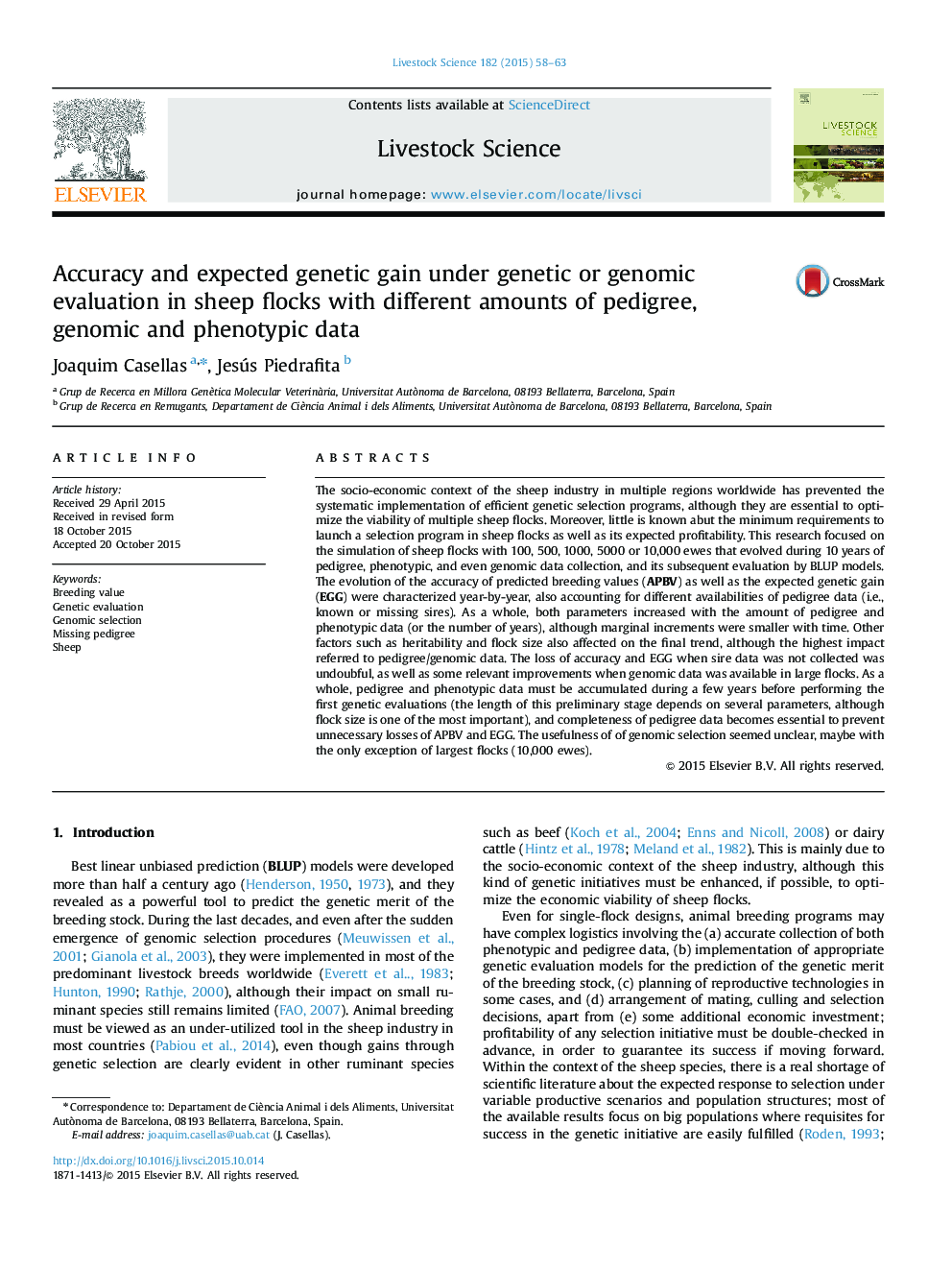| کد مقاله | کد نشریه | سال انتشار | مقاله انگلیسی | نسخه تمام متن |
|---|---|---|---|---|
| 5789970 | 1553950 | 2015 | 6 صفحه PDF | دانلود رایگان |
- We model sheep flocks under different conditions (heritability and genetic/genomic evaluations).
- We examine the impact of available data on the accuracy of genetic evaluations.
- Increasing information will increase the performance of genetic evaluations.
- Completeness of pedigree data becomes essential to guarantee optimum accuracies.
- Usefulness of genomic data is controversial.
sThe socio-economic context of the sheep industry in multiple regions worldwide has prevented the systematic implementation of efficient genetic selection programs, although they are essential to optimize the viability of multiple sheep flocks. Moreover, little is known abut the minimum requirements to launch a selection program in sheep flocks as well as its expected profitability. This research focused on the simulation of sheep flocks with 100, 500, 1000, 5000 or 10,000 ewes that evolved during 10 years of pedigree, phenotypic, and even genomic data collection, and its subsequent evaluation by BLUP models. The evolution of the accuracy of predicted breeding values (APBV) as well as the expected genetic gain (EGG) were characterized year-by-year, also accounting for different availabilities of pedigree data (i.e., known or missing sires). As a whole, both parameters increased with the amount of pedigree and phenotypic data (or the number of years), although marginal increments were smaller with time. Other factors such as heritability and flock size also affected on the final trend, although the highest impact referred to pedigree/genomic data. The loss of accuracy and EGG when sire data was not collected was undoubful, as well as some relevant improvements when genomic data was available in large flocks. As a whole, pedigree and phenotypic data must be accumulated during a few years before performing the first genetic evaluations (the length of this preliminary stage depends on several parameters, although flock size is one of the most important), and completeness of pedigree data becomes essential to prevent unnecessary losses of APBV and EGG. The usefulness of of genomic selection seemed unclear, maybe with the only exception of largest flocks (10,000 ewes).
Journal: Livestock Science - Volume 182, December 2015, Pages 58-63
